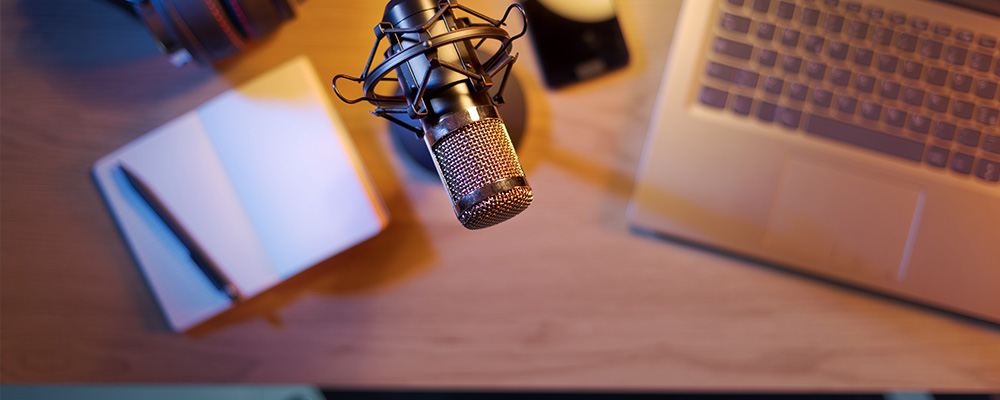Podcasting can become an expensive gear rabbit hole. But you don’t need to spend hundreds or thousands to get professional-level voice audio. A solid budget microphone, paired with smart technique and the right recording setup, can take you far.
In this article, we’ll:
- Review several budget mics that punch above their price
- Compare their strengths and trade-offs for spoken voice
- Offer guidance on mic technique, room setup, and how to integrate with Boomcaster’s local recording and isolated tracks features
Let’s find you a mic that gives real value without breaking the bank.
What Makes a “Budget Mic” Worth Using?
In the world of podcasting, “budget” doesn’t mean “cheap sounding.” A good budget mic should:
- Capture your vocal tone clearly
- Reject ambient noise as much as possible
- Be usable with modest gear (USB or low-gain preamp)
- Work well in real recording environments
- Survive repeated use
Also, in remote or hybrid interview setups, the ability to record locally ensures your mic’s “raw” performance isn’t lost to network compression. That’s where Boomcaster’s architecture gives you a head start: your high-quality capture is preserved before upload or streaming.
Top Budget Podcast Microphones to Consider
Below are six mic options that deliver strong performance in their price brackets.
Here are a few highlights from that list:
- Audio‑Technica AT2040 – hypercardioid dynamic mic optimized for voice, good noise rejection.
- Samson Q2U – USB + XLR flexibility, solid for both beginners and growing setups.
- Rode PodMic – broadcast-style dynamic mic often praised for voice clarity.
- Shure MV7+ – hybrid USB + XLR with DSP features built in.
- FIFINE K688 – dual connectivity USB/XLR, clean voice capture.
- Blue Yeti Nano – compact USB condenser with simple plug-and-play ease.
Now let’s dig into two of them in more detail to illustrate trade-offs and how they behave for spoken voice.
Deep Dive: AT2040 & Samson Q2U
Audio-Technica AT2040
This mic is known for its tight directional pattern and strong performance in less-than-perfect rooms. According to Tape Op, the AT2040 effectively rejects ambient noises such as paper rustling, thanks to its hypercardioid polar pattern.
Reviews also note a “midrange emphasis” when compared to some more neutral mics, which can be managed via EQ.
Strengths:
- Very good off-axis rejection — helps cut room reflections
- Strong sensitivity, so doesn’t demand extreme preamp gain
- Built with a sizable, durable form
Drawbacks:
- Because of its tight pickup pattern, you must stay on-axis or voice will suffer
- Internal shock mounting isn’t perfect — handling noise can creep in
- Requires an interface (no USB version in many standard models)
In practice, in a home studio, AT2040 can shine when your room treatment is modest. And when paired with Boomcaster’s local capture, you preserve the mic’s clean signal for editing.
Samson Q2U
The Samson Q2U is a long-running favorite among budget podcasters. Its USB + XLR design gives versatility: start with USB, upgrade to XLR workflow later. The Podcast Host calls it “great value … good noise isolation.”
Home Brew Audio observed that it outperforms many mics at its price and comes surprisingly close to more expensive dynamics.
Strengths:
- Dual connectivity is a big plus
- Decent noise rejection for a mic in its class
- Widely available, well-supported
Drawbacks:
- More prone to plosives (“p” and “b” pops) than heavier broadcast mics — a pop filter is recommended
- In USB mode, it can have more inherent noise than premium gear
When you pair the Q2U with Boomcaster’s isolated track architecture, you isolate each voice track, enabling more flexible post-production cleanup of plosives and noise.
Other Mics Worth Considering
- Rode PodMic: A broadcast-style mic tuned for voice. Strong voice clarity, with moderate gain demand.
- Shure MV7+: Excellent hybrid mic with DSP features; ideal for creators who want both USB simplicity and pro flexibility later.
- FIFINE K688: Budget hybrid with good clarity and user controls.
- Blue Yeti Nano: Simple USB condenser, best in quiet setups due to sensitivity.
Each of these can perform well when matched with proper technique, a decent interface (if needed), and a recording platform that preserves their fidelity.
Mic Technique & Room Setup: The Invisible Side
Even the best microphone can sound weak without proper technique and room control.
Microphone Technique
- Stay consistently 4–8 inches from your mic
- Speak slightly off-axis to reduce plosives
- Use a pop filter or windshield
- Stay fixed — avoid tilting your head or shifting during recording
Room Treatment
- Use rugs, curtains, soft furniture to absorb reflections
- Avoid parallel hard walls behind or in front of you
- Record in smaller rooms or add hanging fabric
Because any ambient coloration is baked into your raw track, combining good mic technique + room treatment with Boomcaster’s local recording ensures that your subsequent editing steps have clean audio to work with.
Choosing the Best Budget Mic for You
Here’s a simplified decision framework:
- Want USB plug-and-play? → Samson Q2U, MV7+, Yeti Nano
- Need tight noise rejection in a noisy space? → AT2040, PodMic
- Plan to upgrade later to better gear? → Choose hybrid (USB + XLR) models
- Focus on spoken voice only (no music)? → Prefer dynamic mics over condenser
Final Thoughts
There’s no magic “perfect mic” — only the mic you use consistently, well, and with care. With one of the budget options above, paired with good technique, some room awareness, and Boomcaster’s architecture (local capture + isolated tracks), you can rival the sound of far pricier setups.
Start with the mic you can afford, focus on consistency, and upgrade over time. Your audience won’t know your gear—they’ll just hear you clearly.


